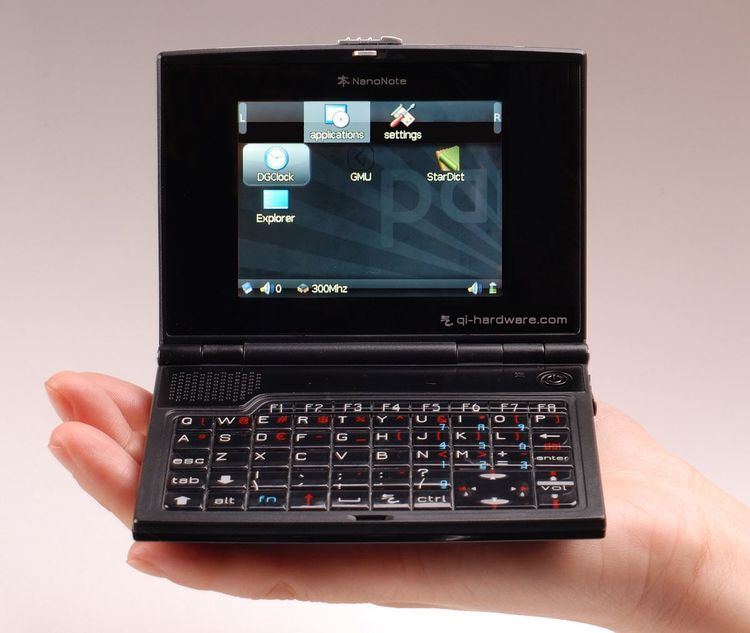Type Handheld computer CPU 336 MHz XBurst JZ4720 | Release date Early 2010 Memory 32 or 64 MB low SDRAM | |
 | ||
Manufacturer Qi hardware, Sharism At Work Ltd Operating system | ||
The Ben NanoNote (officially the 本 NanoNote) is a pocket computer using the Linux-based OpenWrt operating system. An open-source hardware device developed by Qi Hardware, it has been called possibly "the world's smallest Linux laptop for the traditional definition of the word.". In addition, the Ben NanoNote is noteworthy for being one of the few devices on the market running entirely on copyleft hardware.
Contents
The computer takes its name from the Chinese character běn (本), translated as "an origin or the beginning place."
History
Originally the hardware was developed by a third party as a digital dictionary. After the effort of several Qi Hardware developers, the design was freed as open source hardware while using free and open source software.
This product is currently manufactured by Qi hardware and Sharism At Work Ltd. More than 1,000 units have been sold so far.
Software
The device is shipped with the OpenWrt software stack; the custom compilation includes a graphical menu called gmenu2x, with other graphical and command line applications available from the menu.
OpenEmbedded is also available through the Jlime distribution. The Pyneo software stack, a Debian-like distribution aimed for mobiles has been ported. The MIPS architecture port of Debian GNU/Linux can be run on the NanoNote. Additionally there is NanoNixOS, a cross-compiled distribution based on the Nix package manager.
Reception
After the 2010 introduction of the Ben NanoNote, reviewers praised its small size and low cost (US$99), but also criticized the device for its initial lack of any networking capability and for its extremely modest data storage and RAM capabilities in comparison to other contemporary devices.
Product development
Because the device lacked wireless connectivity, implementing this was one of the first goals for the Qi Hardware movement. This add-on, the Ben WPAN, was developed by Werner Almesberger, and mainly consists of an IEEE 802.15.4 subsystem, made up of two boards: a USB dongle (ATUSB) connected to the computer and another card connected to the SDIO port of the device (ATBEN).
All source code, documentation and test procedures, software and hardware schematics are available under copyleft licenses.
UBB, or Universal Breakout Board, is a PCB shaped like a microSD card, focused on DIY projects and general purpose interfacing using the available MMC/SDIO port.
So far two hacks had been published: one of them, the integration with a 443 MHz RF transceiver for power sockets control purposes and later a mix of bit banging and SDIO/DMA features turning the SD card slot into a VGA port.
As the Ben NanoNote uses an Ingenic JZ4720 processor it supports booting from USB without use of the NAND flash memory.
Derivatives
The SIE board is an adaptation of the NanoNote. It has twice the memory and features a XC3S Xilinx FPGA on board. It is based on the XBurst JZ4725 SoC, which has more I/O pins available due to not having a keyboard.
